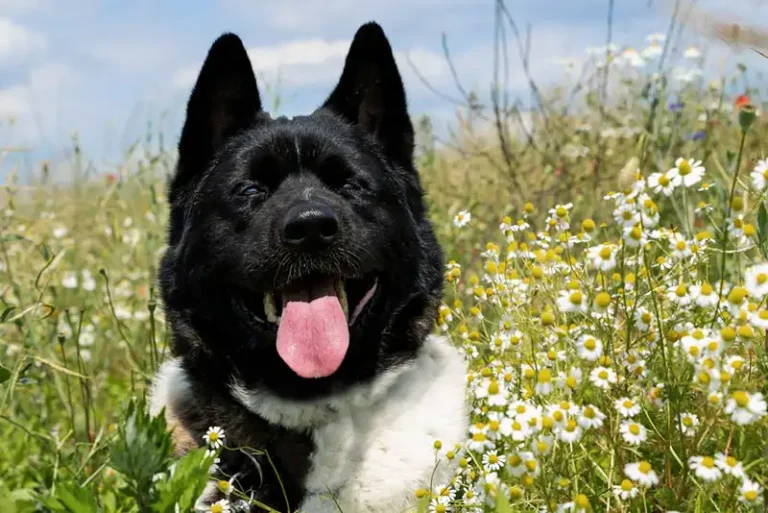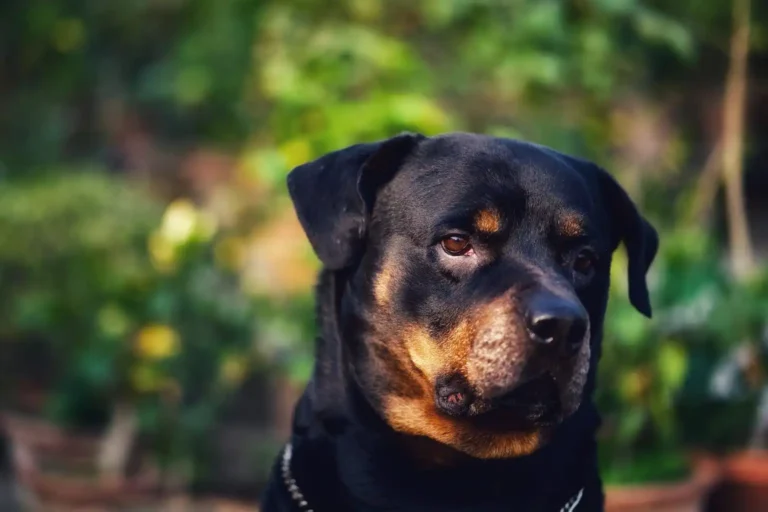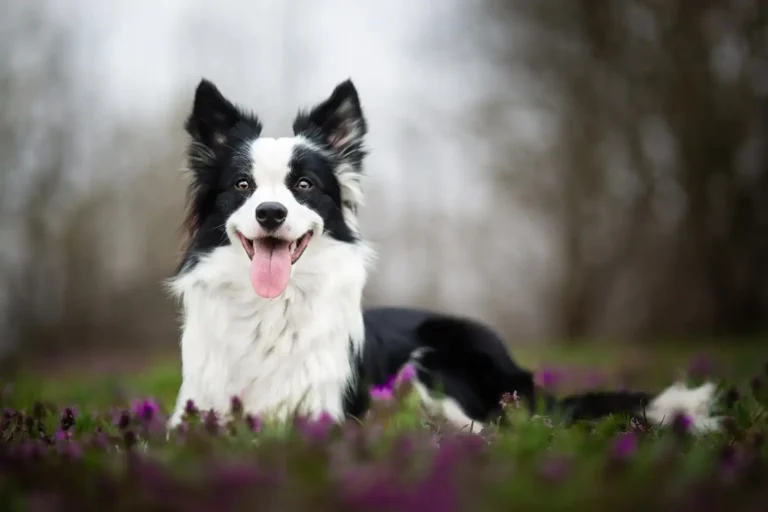Boston Terrier and French Bulldog – Comparison and Differences Between the Two Breeds
There are many breeds that are brachycephalic. Therefore, when it comes to purchasing a pet with a short muzzle, potential owners are faced with the agony of choice. In addition, some representatives of different breeds are very similar in appearance. In this article, we will find out how the Boston Terrier and the French Bulldog differ, what similarities there are between the dogs.
Our text is a great source of information for those who know little about these breeds, but prefer pets with a short muzzle, easy-to-groom fur and a good-natured disposition. These dogs are a great option for a city dweller who prefers leisurely walks in the park.
Content
Basic Information About Boston Terriers
Basic information about French Bulldogs
Differences and similarities between the Boston Terrier and the French Bulldog
FCI Classification
History of origin
Height and weight
Skin folds
Physique
Differences in the colors of Boston Terriers and French Bulldogs
Coat length and care
Character
Attitude towards children and other animals
Conditions of detention
Education and training of the Boston Terrier and French Bulldog
Health
Which breed is right for you – Boston Terrier or French Bulldog?
Boston Terrier vs French Bulldog Comparison Chart
Basic Information About Boston Terriers
The similarities and differences between Boston Terriers and French Bulldogs can be traced by several parameters: the history of the breed, exterior characteristics, temperament features, etc.
The first are considered a decorative breed of dogs. Bred by American breeders in the 19th century, these dogs quickly gained popularity as companions. Initially, the four-legged ones were much larger, but over time, representatives of the breed decreased in size, while retaining their characteristic appearance.
The height of pets, according to the standard, is 38-43 cm, and the weight is 7-11 kg.
The animals have a square head and fairly large, round eyes, set wide apart. The body looks compact. The legs are straight and parallel.
Boston Terriers are sociable, affectionate, and playful. They love to be around children, relatives, cats, and even strangers. They are quite trainable. However, some tendency toward stubbornness may be observed in dogs.
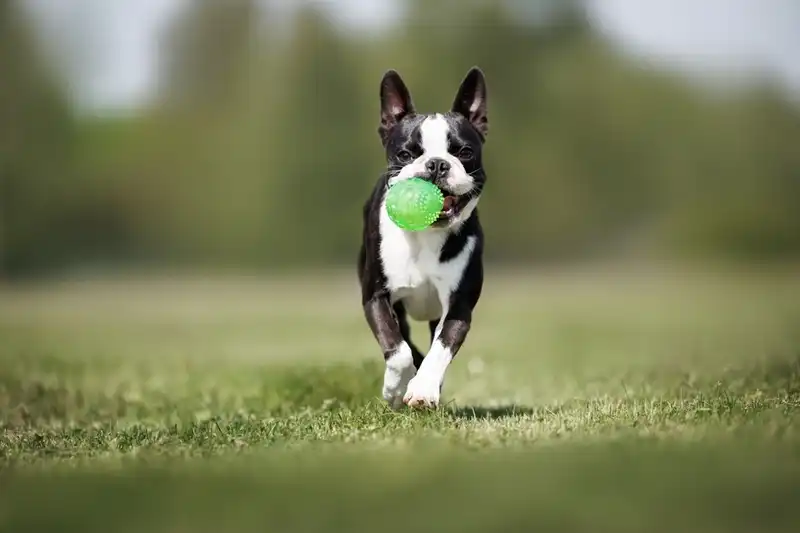
Basic information about French Bulldogs
French bulldogs, whose charming appearance is familiar to many, have a long history, in which many gaps remain to this day. The English and the French still argue about which of them created the breed. According to one version, it arose in the early 19th century, it was at this time that demand for it appeared, keeping such pets became very fashionable.
The height of dogs, according to the breed standard, is 28-35 cm, and the weight is 8-15 kg.
The dogs have a large and massive head with a short muzzle and pronounced folds. The pet looks stocky and muscular, its chest is wide and powerful. The legs are straight, quite strong.
French bulldogs are affectionate and playful. They love their owners with all their hearts and get along well with children and other pets. This breed is considered relatively easy to train, the main thing for the owner is to find the right approach to the pet and not forget about rewards.
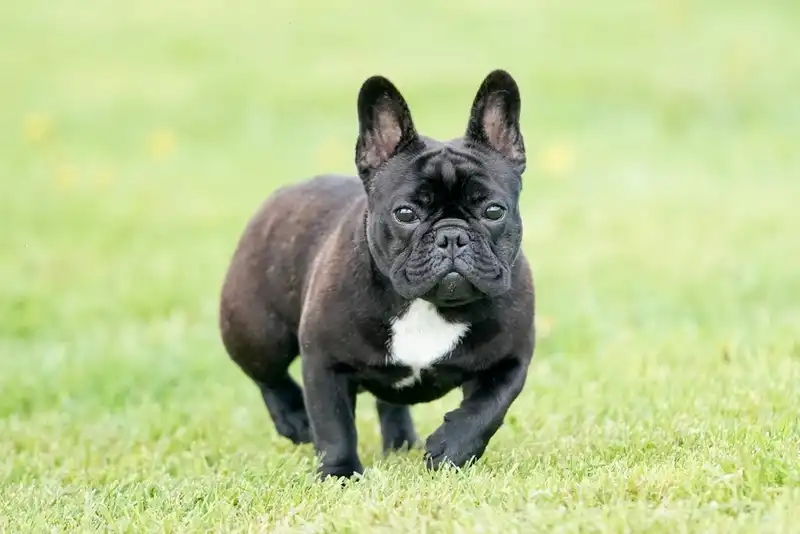
Differences and similarities between the Boston Terrier and the French Bulldog
Finding common and different features in these two breeds is especially important for those who are faced with choosing a future pet. In this block, we will find out how these dogs are similar and what is different in their character and temperament. For a person far from cynology, it will most likely be difficult to differentiate these breeds at all. Although upon closer examination, you can see that each of them has its own specifics.
FCI Classification
The Boston Terrier and Bulldog belong to Group 9 (Companion and Toy Dogs), Section 11 (Small Molossoid Breeds).
This means that pets are considered excellent family pets, they feel great living in the city, and they can be taken with you to various public places.
Section 11 – small molossers – in addition to these breeds, the pug also belongs . All dogs included in this section are distinguished by their small stature, but at the same time, strong build. They look quite wide, stocky and somewhat stocky.
History of origin
The Boston Terrier and the French-bred Bulldog are two dog breeds with very different origins.
The history of the French bulldog has many “blank spots”. To this day, there is no exact opinion about where exactly the breed originated. Its homeland may be France or England. Although the standard indicates the first country. English experts claim that it was their compatriots who brought dogs to France in the 1860s. The French counter that the breed originated in the 16th century or even earlier on their territory.
The Boston Terrier, also called the “American gentleman”, appeared in the USA, and this fact does not require proof. The pets were bred in the 19th century by crossing the English bulldog , bull terrier , boxer , etc. Bulldogs from France, which were considered an established breed at that time, also took part in the selection. This is the reason why they have so many common features.
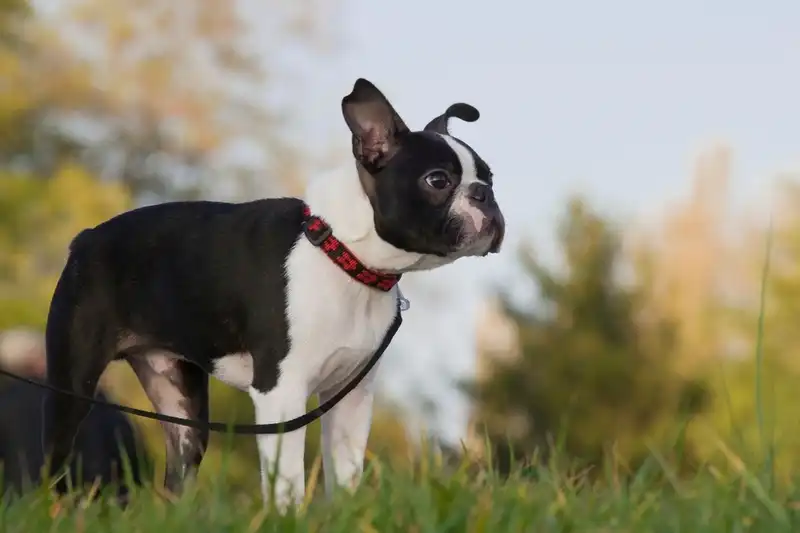
Height and weight
These are two popular dog breeds that are distinguished by their compact body size and width.
How can a non-professional quickly distinguish an adult French bulldog from a Boston terrier? By height and weight. Adult Bostons usually weigh no more than 11 kg and have a height at the withers of 38 to 43 cm. And French bulldogs have a weight of up to 15 kg and reach a height of 28 to 35 cm.
Thus, the first breed is taller than the second, while the second is considered heavier. This feature is visible to the naked eye: bulldogs look wider, their head is noticeably larger, their jaw is stronger, and their body is more massive.
Skin folds
The deep folds in French bulldogs are due to the special structure of the skull. This breed is considered flat-faced, with a protruding lower jaw and wide nostrils. These features lead to the formation of numerous folds of skin around the nose and elsewhere.
Such skin requires constant hygiene. The folds should be cleaned to prevent the accumulation of bacteria, dirt and moisture. To do this, use a cotton pad soaked in warm boiled water or a special antiseptic. It is important to dry the folds well after the procedure to avoid irritation.
The difference between French bulldogs and Boston terriers is that the latter have smoother skin. They do not have excessively deep folds. However, wrinkles can form at the base of the muzzle during facial movements. Caring for the Boston’s skin is much easier.
Physique
Bostons have lighter bones and longer legs, which are believed to be a legacy of their ancestors, the Burrowing Dogs. Burrowing Dogs were bred to hunt small animals in underground tunnels. Their lighter bones and long legs allowed them to move quickly and fit into tight spaces with ease.
A comparison of the body structure of the French Bulldog and the Boston Terrier allows us to say that the former are noticeably heavier. They have a more squat appearance, these are dogs with short legs and a strong skeleton. This difference reflects the different purposes of the breeds: Boston Terriers, having inherited the features of burrow hunting dogs, are more agile and fast, while Bulldogs are not distinguished by a great love of activity.
The Boston Terrier’s body type not only gives them a unique appearance, but also affects their temperament and behavior. They are known for being playful, energetic, and loving to walk and play. Their light frame allows them to move quickly and easily, and their long legs allow them to jump high. In addition, their structure reduces the stress on their joints and bones, making them less susceptible to health problems associated with obesity.
Differences in the colors of Boston Terriers and French Bulldogs
There are significant differences in the permitted colors of these two breeds. All Boston Terriers must have white markings in combination with other acceptable colors. In contrast, Bulldogs can have colors without markings. For example, a solid fawn or brindle. Although white markings are not required for this breed, they may be present on the chest, legs, and face.
The difference in the color standards of Boston Terriers and French Bulldogs is due to the history of their breeding. Terriers took part in the selection of the former, and it was from them that the spotted pattern was inherited.
Coat length and care
One of the key aspects of the similarities between the breeds is the grooming of their coats.
Both Bostons and French Bulldogs have short, smooth coats that require minimal attention from their owners. Both typically have coats that are 1 to 1.5 cm long and lie flat against the body. This makes them ideal breeds for those looking for a dog that requires brushing a couple of times a week.
Brushing with a soft bristle brush is recommended to remove dead hair and dirt. During periods of active shedding, which typically occurs in the spring and fall, more frequent brushing may be required.
Bathing Boston Terriers and French Bulldogs should be done only when necessary. Over-washing can remove natural oils from the skin and lead to dryness and irritation. When bathing, it is recommended to use a mild shampoo and conditioner designed for dogs with short coats. Afterwards, the pet is thoroughly dried with a towel.
Character
Both Boston Terriers and French Bulldogs have a friendly nature. The tailed ones are ready to make friends with everyone. However, there are some minor differences in their temperament. Boston Terriers tend to be more energetic and playful, while Bulldogs are calm and phlegmatic.
Although neither breed is known for barking loudly, French Bulldogs tend to be more “talkative.” They may occasionally bark at strangers or other animals they perceive as a threat. Boston Terriers, on the other hand, are considered quieter.
Both breeds are extremely attached to their owners and adore all members of their families. They are devoted to their loved ones and can suffer from separation anxiety.
Both Boston Terriers and French Bulldogs love affection and attention. They love to be petted, kissed, and hugged.
These are two wonderful dog breeds that can make great companions for families looking for a loving and loyal pet. While they share some similarities, their unique personality differences can influence potential owners’ decisions. For example, the Boston Terrier is a better fit for those looking for a more energetic and playful dog, while the Bulldog is an ideal choice for those who prefer a calm pet that doesn’t like vigorous exercise.
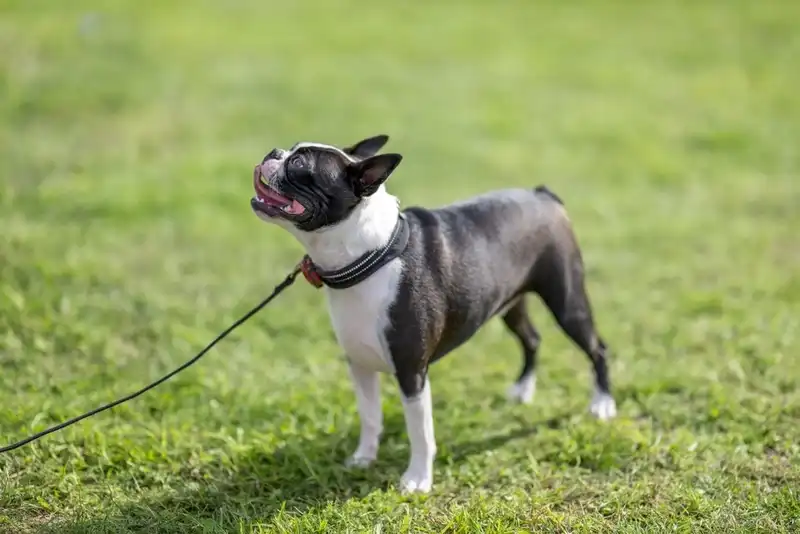
Attitude towards children and other animals
Both Boston Terriers and French Bulldogs are generally good with children. They are non-aggressive, patient, and gentle with children. These dogs are known for their playfulness. However, it is worth considering that Bulldogs get tired much more quickly. These dogs are calmer and more leisurely than Boston Terriers. They are not as energetic and prefer to spend time lying on the couch or sitting on their owner’s lap. They can be great companions for older children who are no longer inclined to boisterous games.
Both breeds get along well with other animals, including dogs and cats. However, there are some factors that can affect their attitude. In particular, socialization of puppies from an early age affects their ability to get along with other tailed ones.
Both Boston Terriers and Bulldogs can be great family pets for families with children and other pets. Their friendly and devoted natures make them great companions. However, it is important to remember the differences in their energy levels, as well as the importance of socialization.
Conditions of detention
These are brachycephalic breeds, meaning they have shortened muzzles. This can make it difficult for them to eat from regular bowls, so brachycephalic bowls are recommended. These breeds are also prone to bloat, so it is important to feed them small meals throughout the day.
Both breeds require a moderate level of exercise.
Bulldogs, however, are considered more phlegmatic. Although they do not require frequent walks, they do require regular play and human interaction.
Both Boston Terriers and French Bulldogs can be prone to chewing, especially when they are puppies. To prevent this problem, owners should provide their pets with plenty of chewing toys. Regular exercise and mental stimulation can also help prevent unwanted behavior.
Both breeds can live in urban conditions. They do not need much living space. Provided that the owner is the owner of a private house, it should be understood that being in a dog cage is unacceptable not only because of the short fur, but also because of the inability to endure prolonged loneliness.
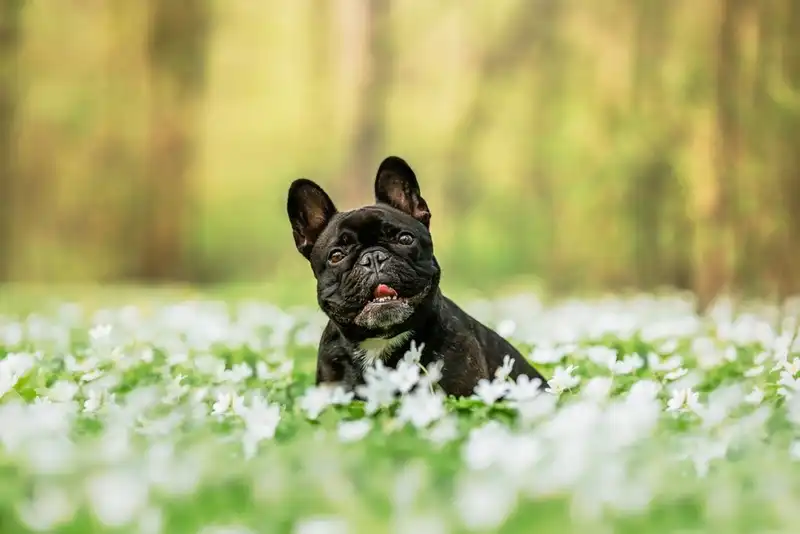
Education and training of the Boston Terrier and French Bulldog
Absolutely all dog breeds need training. It should start in a timely manner: dog handlers believe that at 3-4 months a puppy is already capable of learning a basic set of commands. They immediately begin teaching the simplest skills: accustoming to a nickname, a diaper, its own dishes, etc.
However, it is worth considering that both breeds have an innate tendency to willfulness. Most often, this manifests itself in an unwillingness to comply with the owner’s requirements. To prevent this from happening, it is necessary to find an individual approach to the pet, focusing on rewards rather than punishments (it is recommended to avoid them). Be patient and persistent, and the result will not be long in coming.
Health
Comparing the health of the Boston Terrier and the French Bulldog will help many potential owners make a choice.
Both of these breeds have a certain set of genetic diseases that are considered characteristic. In particular, both bulldogs and Bostons are predisposed to eye problems. This can be cataracts, conjunctivitis, glaucoma. In addition, due to the special structure of the muzzle, dogs can suffer from heat stroke. For this reason, it is important to protect them from heat.
In addition, both of these breeds need to be monitored for nutrition. If the diet is chosen incorrectly, pets may suffer from flatulence and gas.
In general, it can be said that bulldogs have many more hereditary ailments than Bostonians. Frenchies can also be diagnosed with intervertebral hernias, reproductive system disorders, dermatitisand allergic reactions.
Which breed is right for you – Boston Terrier or French Bulldog?
When choosing between a terrier and a French bulldog, potential owners should consider their individual needs and lifestyle.
Please rate the selected breed based on the following parameters:
Activity. Bostons are considered more active. French bulldogs are distinguished by their love of rest, they do not require increased exercise.
Height and weight. Representatives of the Boston Terrier breed are taller. According to the standard, they can be 8-10 cm taller than the French. However, bulldogs are heavier.
Health. As experts note, terriers are less susceptible to various health problems. Whilebulldogs often suffer from flatulence, dermatitis, allergies, etc.
Bostons are more active and will require more walks and exercise, while French Bulldogs are calmer and may be happy to just lie on the couch. Both breeds are great companions, but their different temperaments make them better suited to different types of families.



